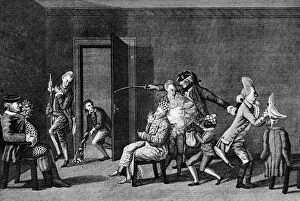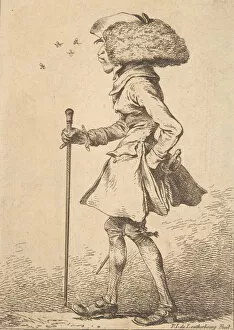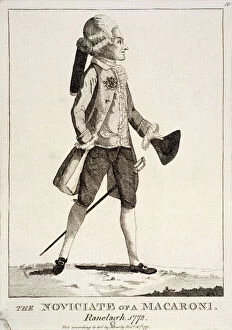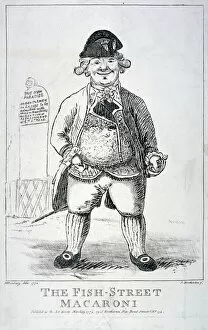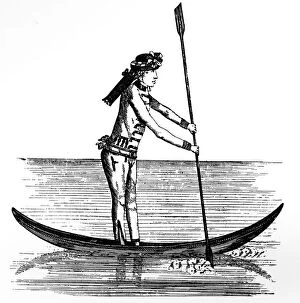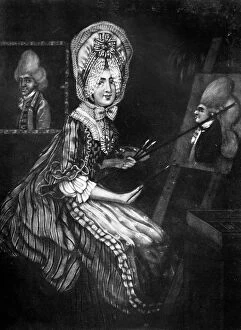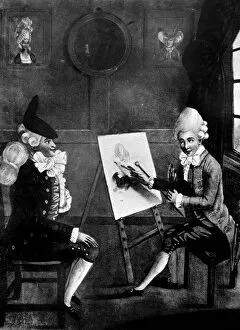Macarony Collection
"Macaroni: A Journey Through 18th Century Fashion and Culture" Step into the world of macaroni
The Macaroni Print Shop, July 14, 1772. Creator: Edward Topham
The Macaroni Print Shop, July 14, 1772
The Martial Macaroni, November 6, 1771. Creator: Matthew Darly
The Martial Macaroni, November 6, 1771
All Professionally Made to Order for Quick Shipping
"Macaroni: A Journey Through 18th Century Fashion and Culture" Step into the world of macaroni, a term that once referred to fashionable young men in 18th century England. This cultural phenomenon is beautifully captured in various artworks and prints from the time. One such piece is "The Macaroni Print Shop, " created by Edward Topham on July 14, 1772. It offers a glimpse into the bustling shop where these trendsetters would gather to admire and purchase prints showcasing their extravagant style. In Charles White's "The Macarony Dressing Room" from 1772, we witness an intimate scene as a macaroni meticulously prepares himself for another day of fashion-forward adventures. The attention to detail in his attire speaks volumes about the importance placed on appearance during this era. "The Dog Barber, " created by an unknown artist on April 25, 1771, adds a touch of whimsy to our exploration. This delightful artwork depicts a macaroni having his beloved canine companion groomed with utmost care—a testament to their dedication not only to personal style but also to pampering their pets. Samuel Hieronymus Grimm's work titled "Well-a-day, Is this my Son Tom?" circa 1773 captures a heartfelt moment between father and son. As Tom embraces the macaroni lifestyle, his traditional father looks on with both surprise and concern—an amusing portrayal of generational differences amidst changing times. Moving forward in time, Philip James de Loutherbourg's painting "From Warwick Lane" transports us to May 1st, 1790—showcasing how macaronis continued influencing society even towards the end of the century. Their flamboyant outfits turn heads as they stroll through London streets with undeniable confidence. Fast forward again—to Allen & Ginter Cigarettes' series called "Worlds Dudes.




